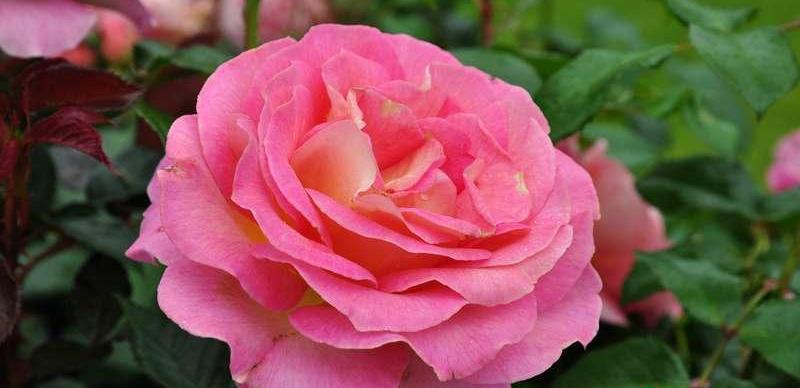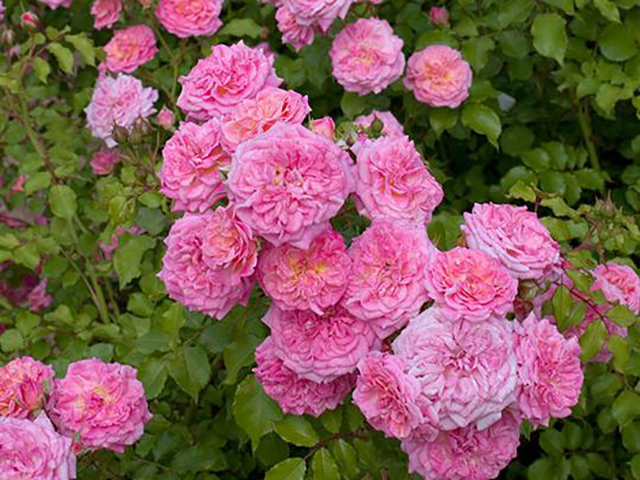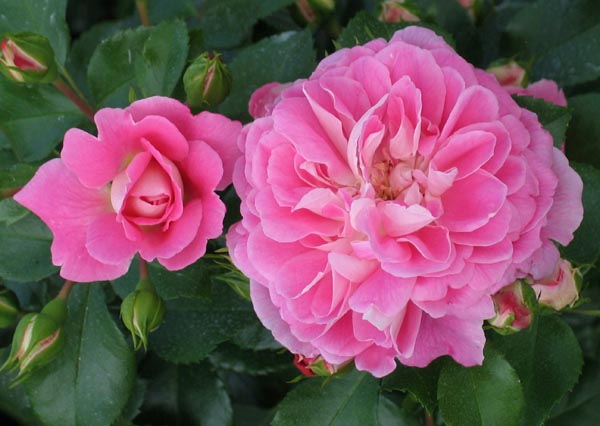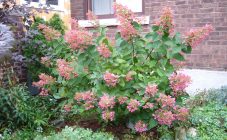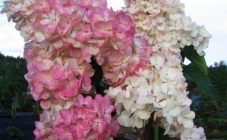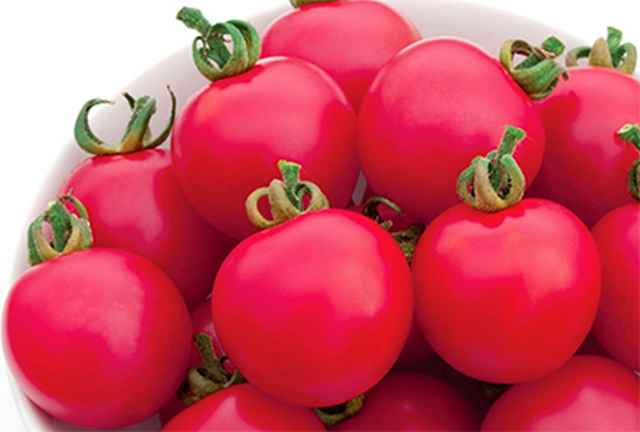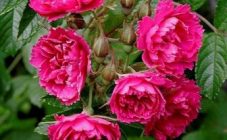Content:
The gift of the gods and the queen of flowers, the queen of the garden, the flower of paradise - a man invented many beautiful epithets and phrases for a rose. A huge number of amateurs grow and cultivate in their gardens and on plots a magic flower with a curly elegant head and a delightful aroma, every year breeders bring out more and more new varieties, surprising people with beautiful bushes.
The most numerous in this family are representatives with pink petals, which is why the word “pink” is added to the name of such varieties, because “pink” in English means “pink”. In collections and catalogs around the world, there are over a thousand varieties with flowers of all kinds of shades of pink.
All roses are conventionally divided into large groups, depending on the height of the bush and purpose:
- park;
- climbing;
- tea-hybrid;
- ground cover;
- flower beds or floribunda.
And in all these groups, the pink rose is represented in a huge assortment.
Hybrid tea varieties
The ancestors of this group were tea roses from Persia, which spread all over the world several hundred years ago, on their basis varieties of modern tea hybrids were bred with abundant flowering throughout the summer and very large flowers, up to 15 centimeters in diameter. The height of the bush reaches a meter in height, the flowers are double and densely double, there is one bud on the stem, some varieties have a small inflorescence:
- Pink O'Hara is a delicate pink bud with large and even petals, a wonderful scent with fruity notes distinguishes this flower, created by French breeders;
- Pink lava is a large goblet flower with regular, slightly corrugated petals of a delicate color;
- Pink Paradise (Pink Paradise rose) - feminine and glamorous bud of bright pink color with a bright yellow tint at the attachment point, has a delicate aroma;
- Mayra pink - a classic flower with an elongated bud, color - beige with a pink center;
- rose Nobless pink - large double flowers, goblet-shaped, with a light floral aroma;
- rose Aykonik pink lemonade - pale pink flowers with a dark center, petals are diluted with a lemon tint;
- Pink intuition rose, flower description - a large double bud, painted with pink and crimson stripes, resembles the structure of marble.
Climbing
By crossing the climbing and bush species, breeders obtained a climbing rose with shoots up to six meters long, allowing designers to form architectural compositions from them in modern gardens. Amateurs use such a plant in their areas to weave various arches and create a horizontal hedge. Climbing roses for the most part have a bright, strong aroma.
Climbing varieties include:
- Pink Lady is a beautiful spreading bush with rich flowers;
- Pink cloud (pink cloud rose) - a dense pink color of petals in combination with a wonderful aroma and strong erect shoots will enchant anyone;
- Pink Candy - the entire palette of shades from white-pink to red is collected in each flower of this beauty. The inflorescences contain up to 15 flowers, with good care it blooms almost continuously.
Groundcover
Small growth up to half a meter and the ability to crawl right on the ground, hang beautifully from flowerpots and pots are the hallmarks of this group.
A typical representative of this group is Pink Drift - small, simple flowers without aroma abundantly cover the plant throughout the season. Frost resistant, disease resistant.
Park
This plant species is closest to its wild ancestors, which are various types of rose hips. They have short flowering, but some varieties bloom again and even three times during the summer.
Typical representatives of this group:
- Westerland is a chameleon variety depending on the weather. Flowers from pale pink to bright orange, on bushes reaching a height of two and a half meters;
- Louis-Odier is a park bush rose with dark pink flowers, with hanging thin peduncles.
Flower beds or floribunda
This variety combines flowers of various heights of the bush, but with one indispensable condition - their flowers are collected in inflorescences. Flowering is long and abundant, in some varieties it is continuous.
Beautiful floribunda representatives:
- rose Tickled pink - pink petals with pale orange veins adorn the bush during the season, blooming in several waves;
- Pink Lace - small buds of a pale pink color collected in inflorescences have a subtle light green tint on the extreme petals;
- rose Tess pink - a bright color, playing with crimson hues, large flowers, collected in inflorescences;
- Pink Abundance (Pink Abundance rose) - rich color of buds collected in small inflorescences, pleasant delicate aroma;
- Lovely pink rose - the bush is strewn with soft pink flowers during the flowering period so that the leaves are practically invisible. Strong, hardy and frost-resistant plant.
Agricultural technology and care
Agrotechnical measures for the queen of gardens do not depend on the color of the petals. Bushes with pink flowers need careful care, like all representatives of this family.
Planting the plant should be carried out in a place where there will be direct sunlight from early morning until lunchtime, and after lunch there is a light partial shade that protects the buds from burnout. On the north side, the plants should be sheltered from cold winds.
Note! This plant should not be planted close to trees - the roots will take up moisture, nutrition, create shade and impair flowering.
This plant loves soil that is loose and fertile, with good permeability and low clay content.
All groups of roses need constant pruning and formation of the bush, the bush will respond with lush flowering to correct and timely pruning. The most time consuming and time consuming is trimming climbing representatives.
In the shade, roses are affected by powdery mildew and black spot. In order to prevent and protect plants from pests and diseases, it would be most correct to use special protective equipment, which can always be purchased in specialized stores. The most frequent "guests" of this flower are rose aphid, red mite, thrips, leafworm and slobbering penny.
Currently, the selection of pink roses is huge. Every gardener and summer resident has the opportunity to choose plants according to his own taste, of any size - from miniature to giants with shoots up to six meters long and grow his dream in almost any climatic conditions.
